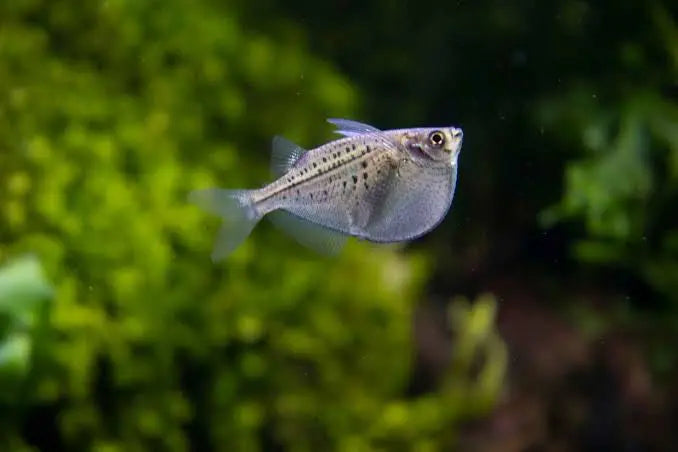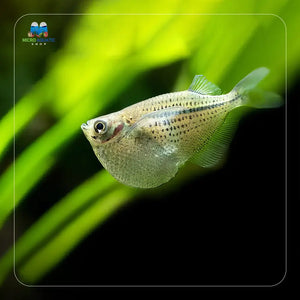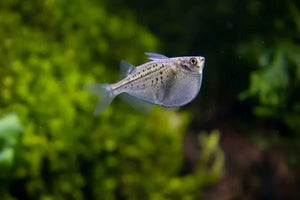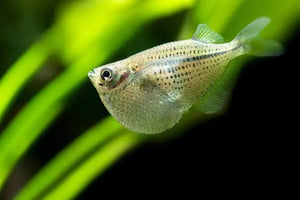Hatchet Fish - Silver ( Nano Top Swimmer )
Order today - receive it in as little as 3-5 days.
Return within 30 days of purchase. Duties & taxes are non-refundable.
Guarantee Safe Checkout
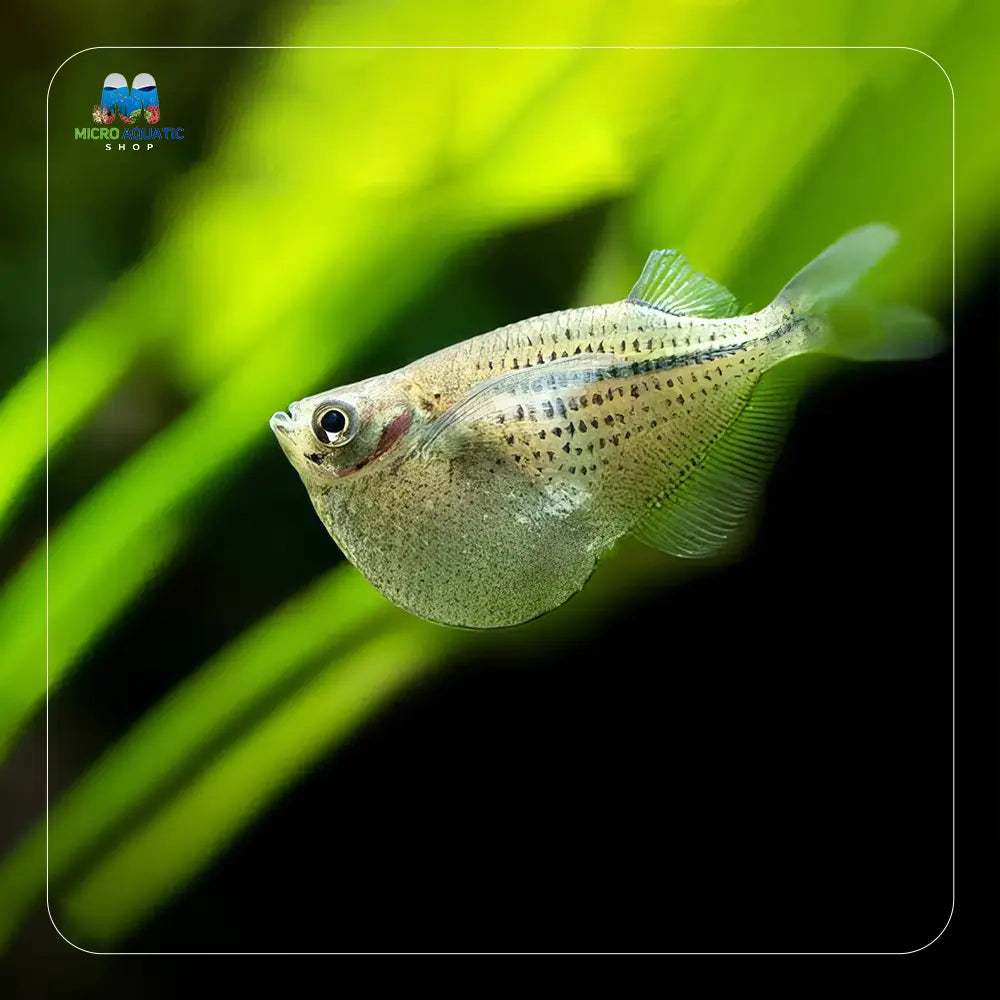
Hatchet Fish - Silver ( Nano Top Swimmer )
✅Most freshwater fish like to hang out in the lower two-thirds of the aquarium, so it can be hard to fill in the upper third with some activity. Enter the hatchetfish. This top-dwelling nano fish has a very unique appearance that looks even cooler when you have a large school darting around just beneath the water surface. However, they have some special care requirements to be aware of, so let’s take a closer look at this interesting oddball.
✅What are the different types of hatchet fish? Several species are sold at local fish stores, but their availability may be seasonal. They usually range from 1–2.5 inches (2.5–6 cm) long, so we have listed them roughly in order of smallest to biggest size.
- Pygmy hatchetfish (Carnegiella myersi)
- Blackwing hatchetfish (Carnegiella marthae)
- Marbled hatchetfish (Carnegiella strigata)
- Silver hatchetfish (Gasteropelecus levis)
- Common hatchetfish (Gasteropelecus sternicla)
- Spotted hatchetfish (Gasteropelecus maculatus)
- Platinum or spotfin hatchetfish (Thoracocharax stellatus)
While some species like the common hatchetfish are now available as captive-bred or tank-raised, most hatchetfish are caught from the wild. By the time they travel from the wholesaler to the fish store, they may be underfed with weakened immune systems, making them more susceptible to disease. Ask the fish store how long they’ve had the hatchetfish, watch them eat, and observe their behavior before making a purchase.
We strongly recommend that you always quarantinehatchetfish, feed them lots of high-quality foods, and proactively treat them with the trio of quarantine medications if possible. Hatchetfish are prone to ich or white spot disease, which is easily cured with Aquarium Solutions Ich-X. Also, wild-caught fish often have internal parasites like tapeworms, so treat them with Fritz ParaCleanse and then treat them again two weeks later to eliminate any worm eggs that hatched.
What fish can live with hatchet fish? Avoid keeping hatchetfish with other fish that are aggressive, large enough to eat them, or fast-swimming and able to outcompete them for food. They do best with tank mates that are similar-sized and peaceful, such as tetras and corydoras catfish. South American dwarf cichlids like German blue rams and Apistogramma cichlids are also fine because they occupy the lower half of the tank, while hatchetfish stay up above.
What fish can live with hatchet fish? Avoid keeping hatchetfish with other fish that are aggressive, large enough to eat them, or fast-swimming and able to outcompete them for food. They do best with tank mates that are similar-sized and peaceful, such as tetras and corydoras catfish. South American dwarf cichlids like German blue rams and Apistogramma cichlids are also fine because they occupy the lower half of the tank, while hatchetfish stay up above.
What Do Hatchetfish Eat?
One of the main problems that fishkeepers have with hatchetfish, especially as they get bigger, is underfeeding because they really prefer to eat from the water surface and do not like swimming down to get sinking foods. In the wild, they use their small, upward-facing mouths to feed on insects and zooplankton. Therefore, feed tiny foods that float for a long time, and decrease water flow near the surface so the food won’t sink as quickly. Good floating foods include high-quality flakes, floating pellets, freeze-dried foods, and live baby brine shrimp that tend to swim toward the aquarium light.
Limited Quantity Available - Will Sell out Fast!
Note:
We can’t ship Livestock and Live Plants to WA and TAS due to State Restrictions. Kindly check out our DOA and other policies before purchase!!
What to Expect from Us
All Aquatic plants and animals come with a 100% live arrival guarantee!!

| Quantity |
1 fish 2cm |
|---|

